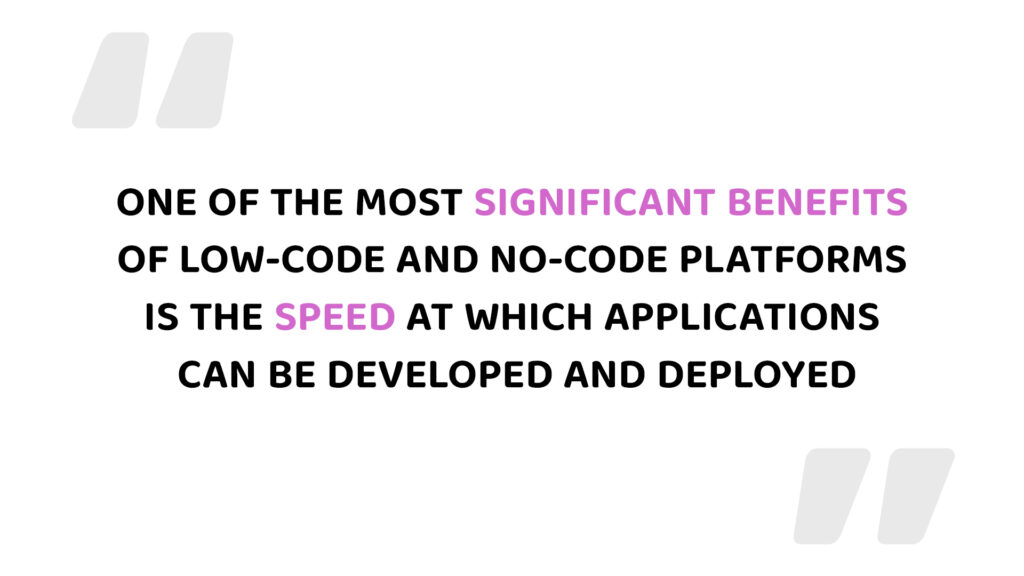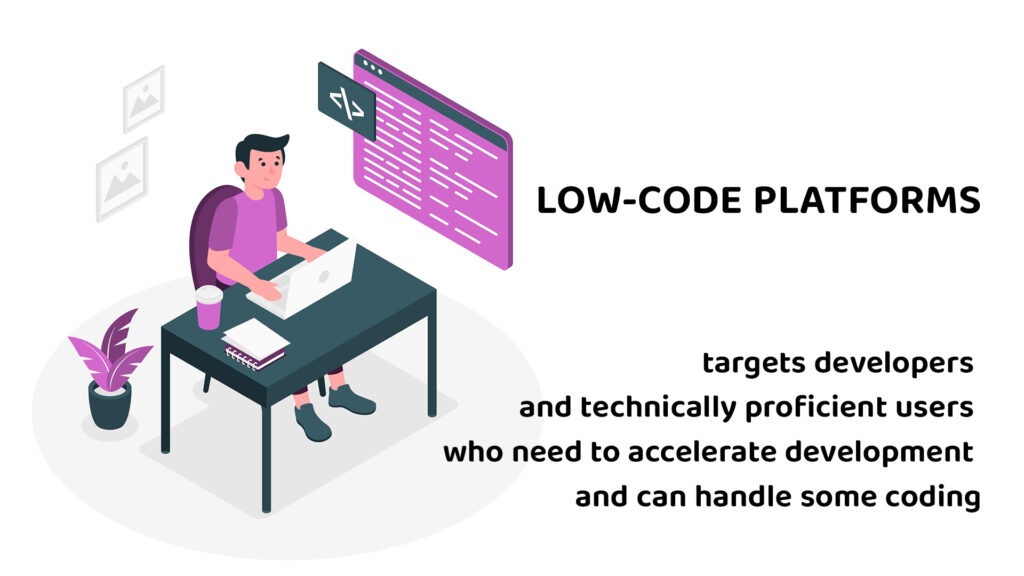The Rise of Low-Code/No-Code Development Platforms

In today’s fast-paced business environment, the demand for rapid software development and deployment has never been higher. Traditional development methods, while powerful, often require significant time, resources, and specialized skills. Enter low-code and no-code development platforms—revolutionary tools that are transforming the way applications are built.
Low-code and no-code platforms empower users to create functional applications with minimal hand-coding, making software development accessible to a broader audience, including those without extensive technical backgrounds. These platforms are designed to streamline the development process, allowing businesses to quickly respond to market changes and innovate at a faster pace.

Understanding Low-Code and No-Code Platforms
Low-code and no-code platforms have emerged as powerful tools in the realm of software development, offering a more accessible and efficient way to build applications. While both aim to simplify and accelerate the development process, they cater to slightly different needs and user bases.
Low-Code Platforms
Low-code platforms provide a development environment that allows users to create applications with minimal hand-coding. These platforms offer a graphical interface where users can drag and drop components to design their applications.

Key features of low-code platforms include:
- Visual Development Tools. Drag-and-drop interfaces to design application workflows and user interfaces.
- Pre-built Components. Reusable components and templates for common functionalities like forms, reports, and dashboards.
- Integration Capabilities Tools to easily integrate with existing systems, databases, and third-party services.
- Extensibility. The ability to add custom code for more complex requirements or to extend the functionality of the built-in components.
Popular low-code platforms include Caspio, Mendix, and Appian. These platforms are particularly useful for developing enterprise-grade applications, complex workflows, and automating business processes.
No-Code Platforms
No-code platforms take the simplification a step further by enabling non-technical users to build applications without writing any code. These platforms are designed for business users, such as project managers, marketers, and entrepreneurs, who need to create custom applications quickly and efficiently.

Key features of no-code platforms include:
- User-Friendly Interfaces. Intuitive drag-and-drop editors that require no coding knowledge.
- Pre-configured Templates. Ready-made templates for various types of applications, such as CRM systems, e-commerce sites, and data management tools.
- Automation Tools. Built-in automation features to streamline workflows and business processes.
- Easy Deployment. Simplified deployment processes that allow users to publish applications with just a few clicks.
Popular no-code platforms include Bubble, Webflow, and Airtable. These platforms are ideal for creating simple to moderately complex applications, such as internal tools, MVPs (Minimum Viable Products), and prototypes.
Key Differences
While both low-code and no-code platforms aim to accelerate application development, they differ primarily in their target users and the level of technical knowledge required:
Low-Code: targets developers and technically proficient users who need to accelerate development and can handle some coding.
No-Code: targets non-technical users who need to build applications without any coding.
Benefits of Low-Code/No-Code Platforms

One of the most significant benefits of low-code and no-code platforms is the speed at which applications can be developed and deployed. By providing pre-built components, visual development tools, and templates, these platforms drastically reduce the time required to create functional applications. According to a Forrester report, companies using low-code platforms have seen a 50-70% reduction in development time.
Low-code and no-code platforms significantly reduce the need for extensive coding and specialized development skills, leading to lower labor costs. Additionally, faster development cycles mean that businesses can bring products to market more quickly, generating revenue sooner. A survey by Mendix found that 69% of IT leaders believe that low-code/no-code development reduces development costs.
The benefits of low-code and no-code platforms are clear: faster development cycles, reduced costs, greater accessibility for non-technical users, and improved collaboration. By leveraging these platforms, organizations can accelerate their digital transformation efforts and stay competitive in an increasingly fast-paced market.
Challenges and Limitations
While low-code and no-code platforms offer numerous benefits, they also come with certain challenges and limitations that organizations need to be aware of. One of the primary limitations of low-code and no-code platforms is the level of customization they offer. While these platforms provide a wide range of pre-built components and templates, there may be scenarios where highly specific or complex requirements cannot be met without custom coding. According to a survey by OutSystems, 37% of developers cited limited customization options as a significant challenge when using low-code platforms.
Security is a major concern when it comes to low-code and no-code platforms, too. These platforms often abstract much of the underlying code and infrastructure, which can make it difficult to implement advanced security measures. Additionally, because these platforms are designed to be accessible to non-technical users, there is a risk that applications may not adhere to best security practices. A Gartner report highlighted that by 2024, 75% of large enterprises will be using at least four low-code development tools, but 50% of them will encounter security vulnerabilities due to insufficient security measures.
Integrating low-code and no-code applications with existing systems and third-party services? That can sometimes be challenging. While many platforms offer integration capabilities, they may not support all the specific requirements or custom integrations needed by an organization. According to a survey by TechRepublic, 33% of respondents indicated that integration with existing systems was a significant barrier when adopting low-code platforms.
Conclusion
Low-code and no-code platforms are transforming the way organizations develop and deploy applications. By offering faster development cycles, reduced costs, and accessibility to non-technical users, these platforms empower businesses to innovate and respond to market changes more effectively. Despite challenges such as customization constraints and security concerns, the benefits of low-code and no-code development are substantial.
Organizations across various industries, from SMEs to large enterprises, startups, healthcare providers, and educational institutions, are leveraging these platforms to meet their unique needs and drive digital transformation. By carefully evaluating the specific requirements and potential limitations, businesses can successfully integrate low-code and no-code solutions into their development processes.
As the adoption of these platforms continues to grow, their impact on the software development landscape will become even more pronounced. Embracing low-code and no-code development is not just a trend but a strategic move towards more agile, efficient, and inclusive innovation. For organizations looking to harness the full potential of these platforms, the future holds exciting possibilities for rapid development and enhanced business outcomes.